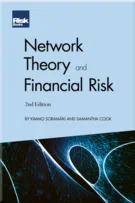Environmental and Social Risks from the Perspective of Reputational Risk
Nina Roth and Olivier Jaeggi
Introduction
Reputational Risk: A Short Introduction
What History Teaches Bankers about Reputation Management
An Asset–Liability View of Banks’ Reputation
Reputational Risk in the Universe of Risks: Boundary Issues
Corporate Governance Changes Following Reputational Damage in the Financial Industry
Reputational Risk and Prudential Regulation
Managing Stakeholder Expectations
Environmental and Social Risks from the Perspective of Reputational Risk
The Relationship between Reputational Risk Management and Business Continuity
Tracking Reputation and the Management of Perception at UniCredit
Successful Recovery from Reputational Crises: Legitimate versus Illegitimate Risk Case Studies
Reputational Risk Management Across the World: A Survey of Current Practices
Governance as the Starting Point for a Reputational Risk-Management Process
Managing Reputational Risk in a Major European Banking Group
The Implementation of the UniCredit Group Approach
Promotional Banks: An Introduction to Reputational Risk Management
Reputational Risk Management in a Global Insurance Company
Reputational Consequence Management: The Future
INTRODUCTION
There are at least three reasons to have a chapter on environmental and social (E&S) risks in this book. First, such a chapter can contribute to a better understanding of E&S risks. Second – and this rationale likely resonates more with the readers of this book – E&S risks offer interesting insights into reputational risk. This is because, in the arena of E&S risks, reputational risk can occur independently of other risk types. Therefore, discussing E&S risks also contributes to the discussion about whether or not reputational risk events occur only as a consequence of other risk types (for example, credit risk, market risk, and operational risk). Third, in most banks E&S risks are still a neglected source of reputational risk, despite their importance. This is why the main purpose of this chapter is to make the case that E&S issues harbour considerable potential for damage in the here and now, and that banks take a significant risk if they underestimate them.
The chapter is organised into five sections: the first section contains a framework that describes E&S risks, particularly those that present reputational risks for banks. Here, we discuss the fact that E&S
Copyright Infopro Digital Limited. All rights reserved.
As outlined in our terms and conditions, https://www.infopro-digital.com/terms-and-conditions/subscriptions/ (point 2.4), printing is limited to a single copy.
If you would like to purchase additional rights please email info@risk.net
Copyright Infopro Digital Limited. All rights reserved.
You may share this content using our article tools. As outlined in our terms and conditions, https://www.infopro-digital.com/terms-and-conditions/subscriptions/ (clause 2.4), an Authorised User may only make one copy of the materials for their own personal use. You must also comply with the restrictions in clause 2.5.
If you would like to purchase additional rights please email info@risk.net









